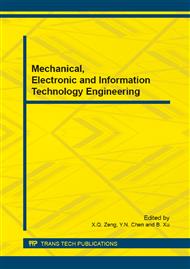[1]
Yagoda, H. N., et al. Subdivision of Signal Systems into Control Areas. Traffic Engineering, Vol. 43 No. 12, 1973, pp.42-46.
Google Scholar
[2]
Chin-Ping, E. How to Decide the Interconnection of Isolated Traffic Signals. 1985. New York, NY, USA: IEEE.
Google Scholar
[3]
Hook, D. and A. Albers. Comparison Of Alternative Methodologies To Determine Breakpoints In Signal Progression. in The 69th Annual Meeting of Institute of Transportation Engineers. 1999. Las Vegas, Nevada.
Google Scholar
[4]
Husch, D. and J. Albeck. Synchro 6 User Guide. Trafficware, Albany, CA, (2003).
Google Scholar
[5]
Gordon, R. L. and W. Tighe, Traffic Control Systems Handbook. 2005, FHWA: Washington D. C.
Google Scholar
[6]
Ma, Y., Y. Zeng, and X. Yang. Study of correlation degree for traffic design of intersection group. Journal of Beijing Institute of Technology, Vol. 21 No. Suppl. 2, 2012, pp.11-14.
Google Scholar
[7]
NSW, R. a. T. A. o., Scats User Manual. 1997: AUSTRALIA.
Google Scholar
[8]
Limited, T., S. T. C. Limited, and P. T. Limited, Scoot Traffic Handbook. (2000).
Google Scholar
[9]
Moore, J. E. and P. P. Jovanis. Statistical Designation Of Traffic Control Subareas. Journal of Transportation Engineering, Vol. 111 No. 3, 1985, pp.208-223.
DOI: 10.1061/(asce)0733-947x(1985)111:3(208)
Google Scholar
[10]
Zhang, Z. -q., Y. Li, and Q. -f. Liu. Study of self-organizing technique in urban traffic control system. Manofacturing Automation, Vol. 2002 No. 3, 2002, pp.38-40.
Google Scholar
[11]
Ma, Y., Y. -C. Chiu, and X. Yang. Urban traffic signal control network partitioning using laplacian eigenvectors. in the 12th International IEEE Conference on Intelligent Transportation Systems. 2009. St. Louis, MO, USA.
DOI: 10.1109/itsc.2009.5309560
Google Scholar
[12]
TRB. Highway Capacity Manual 2010 Transportation Research Board of the National Academies, Washington, DC, (2010).
Google Scholar
[13]
Simon, H. D. Partitioning of unstructured problems for parallel processing. Computing Systems in Engineering, Vol. 2 No. 2-3, 1991, pp.135-148.
DOI: 10.1016/0956-0521(91)90014-v
Google Scholar
[14]
Fiedler, M. Algebraic Connectivity Of Graphs. Czechoslovak Mathematical Journal, Vol. 23 No. 2, 1973, pp.298-305.
DOI: 10.21136/cmj.1973.101168
Google Scholar
[15]
Fiedler, M. Eigenvectors Of Acyclic Matrices. Czechoslovak Mathematical Journal, Vol. 25 No. 4, 1975, pp.607-618.
DOI: 10.21136/cmj.1975.101356
Google Scholar
[16]
Fiedler, M. Property Of Eigenvectors Of Nonnegative Symmetric Matrices And Its Application To Graph Theory. Czechoslovak Mathematical Journal, Vol. 25 No. 4, 1975, pp.619-633.
DOI: 10.21136/cmj.1975.101357
Google Scholar
[17]
Webster, F. V. Traffic signal settings. H.M.S.O., London, (1958).
Google Scholar
[18]
Abdulaal, M. and L. J. LeBlanc. Continuous equilibrium network design models. Transportation Research Part B: Methodological, Vol. 13 No. 1, 1979, pp.19-32.
DOI: 10.1016/0191-2615(79)90004-3
Google Scholar
[19]
Dafermos, S. Traffic equilibrium and variational-inequalities. Transportation Science, Vol. 14 No. 1, 1980, pp.42-54.
DOI: 10.1287/trsc.14.1.42
Google Scholar
[20]
Smith, M. J. Junction interactions and monotonicity in traffic assignment. Transportation Research Part B: Methodological, Vol. 16 No. 1, 1982, pp.1-3.
DOI: 10.1016/0191-2615(82)90036-4
Google Scholar
[21]
Meneguzzer, C. An equilibrium route choice model with explicit treatment of the effect of intersections. Transportation Research Part B: Methodological, Vol. 29 No. 5, 1995, pp.329-356.
DOI: 10.1016/0191-2615(95)00011-2
Google Scholar
[22]
Sheffi, Y. Urban Transportation Networks: Equilibrium Analysis with Mathematical Programming Methods. Prentice-Hall, Englewood Cliffs, (1985).
Google Scholar
[23]
Smith, M. J. and T. van Vuren. Traffic Equilibrium with Responsive Traffic Control. Transportation Science, Vol. 27 No. 2, 1993, pp.118-132.
DOI: 10.1287/trsc.27.2.118
Google Scholar
[24]
Zeng, Y., et al. An urban traffic assignment method considering signal delays at intersections. in 10th International Conference of Chinese Transportation Professionals 2010. Beijing, China: American Society of Civil Engineers.
Google Scholar


